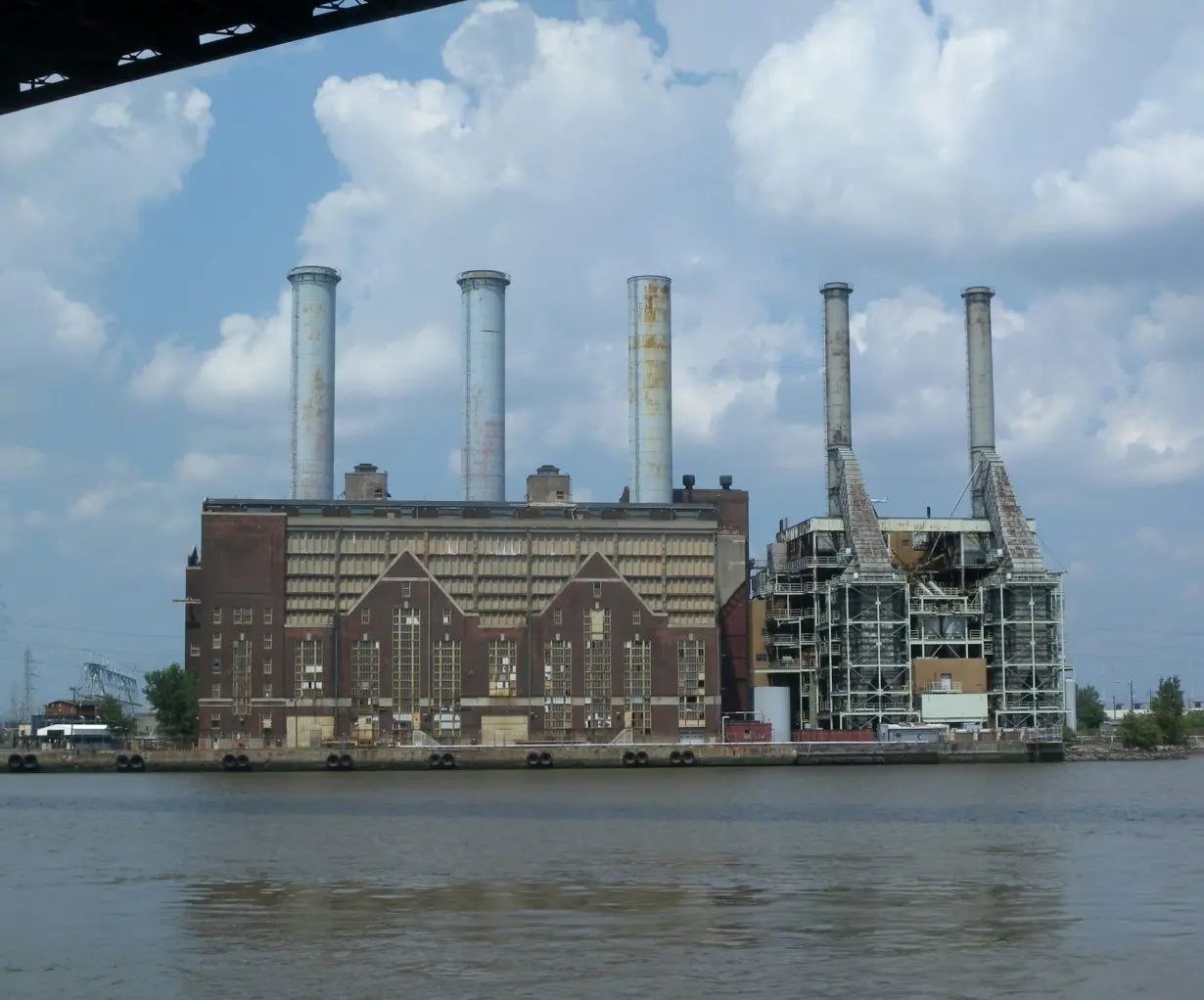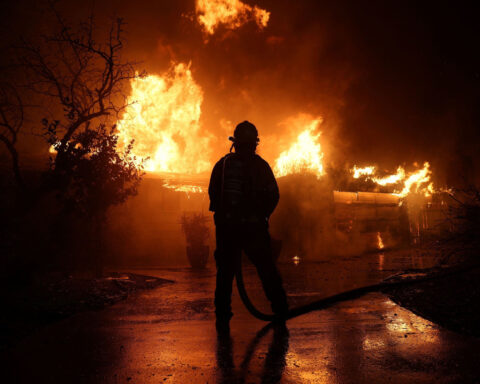The U.S. is nearing the end of one of its hottest summers on record. Across the nation, heat waves have driven peak electricity demand on some days to levels far exceeding seasonal averages.
Grid operators rely on so-called “peaker” plants to ensure they will have enough supply to meet these demand surges. Peaker units can start up quickly and at relatively low cost, but they typically burn more fuel per unit of electricity produced than other types of fossil fuel units.
Because they are less efficient than other plants, peakers typically run only during high-demand periods. Historically, peakers have run for less than 10% of the year, often for just a few hours at a stretch.
Nonetheless, their higher emissions per unit of electricity produced raise environmental and health concerns. As of 2021, there were 999 peaker plants across the U.S., in all 50 states. About 70% of these plants burned natural gas, and the rest were powered by oil and coal.
To reduce air pollution and combat climate change, the U.S. is shifting away from fossil fuels and increasing its use of renewable energy sources such as wind and solar power. Ironically, though, as climate change generates more frequent and intense heat waves, many electricity systems are increasingly relying on peaker plants to balance fluctuations in renewable power generation. Proposals to build new peakers or extend the lives of old ones have stirred controversy in states including Wisconsin, Massachusetts, Texas and New York.
My research focuses on the economic and environmental costs and benefits of producing electricity. Here’s how the clean energy transition is changing the role of peaker plants and some other options for keeping the lights on during peak demand periods.
South Bronx residents call on New York state to shut down local peaker plants in 2022. These plants are disproportionately located in low-income and minority neighborhoods.
Balancing the power supply
For system operators, one key characteristic of a power plant is whether it can produce power on demand. Many renewable resources, including wind, solar and certain types of hydropower, are known as nondispatchable resources because they are governed by nature, producing energy when conditions allow. The cost of generating electricity with them is low, so they are typically used to their maximum capacity.
Power plants that run on fossil fuels or nuclear power are known as dispatchable resources because they can produce power whenever it’s needed. They have higher operating costs than renewables, however, mainly because gas, coal, nuclear and oil plants must buy fuel in order to operate.
Some of these plants – historically, those that run on coal or nuclear fuel – are called baseload plants. They generate power relatively cheaply but take time to start up and ramp up to full power. Intermediate units produce power at a higher cost for each additional megawatt-hour produced, but they can cycle up and down more quickly than baseload plants. Peakers have the highest costs per megawatt-hour, but they can adjust their output very quickly.
Historically, baseload units operated year-round, with intermediate units adjusting output to meet short-term demand fluctuations. Peaker plants were used only during rare peak demand periods.
But as power suppliers add more wind and solar energy to the grid, they are using dispatchable fossil fuel units more frequently to balance changes in renewable generation – for example, to run air conditioners when the sun goes down but temperatures are still high. This favors units that can quickly change production levels, even if they are less fuel-efficient. The result is a growing role for peaker plants.
Environmental justice flash points
Electricity production from fossil fuels in the U.S. has decreased with large-scale investment in wind and solar generation. But fossil fuel-burning power plants still produce about 60% of U.S. electricity – and those plants emit pollutants that contribute to climate change and degrade local air quality.
Exposure to sulfur dioxide, nitrogen dioxide, particulate matter and ozone is linked to respiratory and cardiovascular illnesses and premature death. While overall air pollution has decreased in the U.S. in recent decades, low-income and minority neighborhoods still suffer disproportionately from poor air quality.
One 2022 report estimates that 32 million Americans live within 3 miles of a peaker plant. In 2024, the U.S. Government Accountability Office reported that historically disadvantaged racial or ethnic communities were statistically more likely to be located closer than average to peakers.
Other ways to meet peak demand
How else can electricity supply and demand be balanced? One option is using batteries to store electricity when wind or solar output is high, then discharging it when demand exceeds supply from conventional resources.
Although battery investment costs currently are high, they are projected to decrease significantly in the coming decades. In 2023, the U.S. had a total of about 15 gigawatts of battery storage capacity – equivalent to 15 large nuclear power plants – and that figure could double in 2024.
Another alternative is expanding transmission systems, which make it possible to draw on electricity from lower-cost units in distant areas instead of relying on nearby peaker plants. Building new transmission lines, however, comes with significant regulatory, permitting and land use challenges.
A third option is demand response programs, in which electricity consumers pay higher prices during higher demand periods. This could help reduce peaks and valleys in demand across the day, benefiting more efficient but less flexible baseload units designed to run around the clock.
Most consumers, however, don’t currently pay prices that reflect short-term changes in wholesale electricity costs. Moreover, it’s uncertain whether residential customers would alter their consumption based on short-horizon price fluctuations. Technologies such as smart thermostats and energy management apps could help by taking the burden off consumers to manually adjust their electricity use in response to price fluctuations.
Finally, power plant owners can invest in technologies to reduce emissions from fossil fuel units. Peakers typically lack pollution control technologies because they aren’t used very often. Retrofitting older plants to make them more efficient could also help, since they would produce fewer emissions for each unit of electricity.
These investments are costly, so policymakers have to weigh the health benefits of reduced air pollution against the investment costs for power plant owners.
Increasing investment in wind and solar energy is reducing local air pollution from electricity production. But it’s also shifting production away from thermally efficient baseload units that can’t respond quickly to shifts in demand or renewables output. I believe it is increasingly important to explore policies that create incentives for investing in alternatives such as battery storage and transmission infrastructure, as well as in power plant upgrades to reduce pollution exposure.

Akshaya Jha does not work for, consult, own shares in or receive funding from any company or organization that would benefit from this article, and has disclosed no relevant affiliations beyond their academic appointment.
Source: The Conversation

 Trump has begun another trade war. Here's a timeline of how we got here
Trump has begun another trade war. Here's a timeline of how we got here
 Canada's leader laments lost friendship with US in town that sheltered stranded Americans after 9/11
Canada's leader laments lost friendship with US in town that sheltered stranded Americans after 9/11
 Chinese EV giant BYD's fourth-quarter profit leaps 73%
Chinese EV giant BYD's fourth-quarter profit leaps 73%
 You're an American in another land? Prepare to talk about the why and how of Trump 2.0
You're an American in another land? Prepare to talk about the why and how of Trump 2.0
 Chalk talk: Star power, top teams and No. 5 seeds headline the women's March Madness Sweet 16
Chalk talk: Star power, top teams and No. 5 seeds headline the women's March Madness Sweet 16
 Purdue returns to Sweet 16 with 76-62 win over McNeese in March Madness
Purdue returns to Sweet 16 with 76-62 win over McNeese in March Madness








